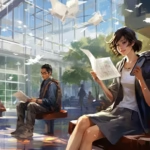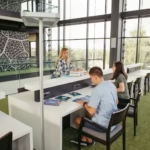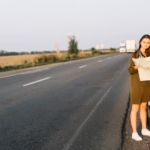Join Verge PDX this Sunday for the opening reception of Danielle Schlunegger-Warner’s solo exhibition at the Red Fox in North Portland on Sunday February 12th, 7-9pm.
This solo exhibition will be on display at Red Fox during regular business hours for the month of February. If you aren’t able to make the opening, be sure to stop by during the month.
About the Artist:
Danielle Schlunegger-Warner grew up amongst the shell shops and sand dunes of Ventura, CA. Her artwork is strongly influenced by 18th century Cabinets of Curiosity and early explorers.
Inspired by natural history and the museums that house it, Danielle creates her own worlds within this established context. Her new work presents a vision of exploration and conquest during the Age of Discovery in the Americas, searching for the misguided promise of untouched land and wild creatures from the perspective of naturalists and scientists, who are themselves invaders.
For her solo show at The Red Fox, Danielle presents a series of bear trophies that span the geographical history of the American Continent. In this new work she uses the addition of museum style info graphics to tell the story of the complicated relationship humans often have with the natural world. Pages from a used copy of “The Rise of the American Civilization” by early 20th C. historian, Charles Austin Beard, are just visible underneath the faux fur of the sculpted heads, linking their endangerment and extinction to parallel moments in American history. In addition to this series, Bobcat specimens from her natural history project, The Marcus Kelli Collection will also be on view.
Studio Visit with Matt Hall
Article by Danielle Schlunegger-Warner
I had found out about Matt Hall’s work, like so many other artists I have found recently, through Instagram. I loved the way he was combining traditional skeletal articulation and conceptual ideas. Pouring over the sculptures and cabinets on his website, I saw little hints of Joseph Cornell, Mark Dion, and a sort of Mellvinian disposition of sadness just under the surface of the work.
Knowing Matt works mainly with road kill and specimen preservation I had a pretty good idea of what I’d be walking into when I reached his Portland studio, but I was ready for some surprises as well. I shuffled my camera around in my bag as walked up to the blank side of an industrial building up to an unassuming door “with bad graffiti” on it as Matt had instructed.
Below the cabinet is a little worktable covered in Tupperware and clear boxes filled with bones, feathers, and the sort. An open container has pieces of a skull. “This is a porcupine” Mat chimes in. “Since I work with mostly road kill or animals who died naturally sometimes there’s trauma that’s been dealt to the bones, and they just come out shattered like this. I’m not even sure if I can use this one because the damage is so bad. It becomes this very complicated puzzle that I can sometimes put back together, but I don’t know about this one,” he says looking sadly at the bits of skull.
The first room was a bike workshop, with another studio sectioned off to the right. After greeting Matt at the door we walked through the shop to his studio in the back. Matt drew back a little curtain and we stepped into his space. The walls were covered in open-faced boxes that were filled with delicate little specimens of small skeletons, dried blue flowers, skulls, a naturally mummified Rat, and bits of paper.
“That’s my Cabinet of curiosity. I like to change it around every now and then, but I’m pretty happy with it right now” Matt tells me as leaned in to get a closer look the mummified rat and some dried blue flowers. I mentioned that I love the color of the flowers and he told me how he likes to see how long the color lasts, and keeps track of how long it takes for the colors on things like that to turn brown.
Below the cabinet is a little worktable covered in Tupperware and clear boxes filled with bones, feathers, and the sort. An open container has pieces of a skull. “This is a porcupine” Mat chimes in. “Since I work with mostly road kill or animals who died naturally sometimes there’s trauma that’s been dealt to the bones, and they just come out shattered like this. I’m not even sure if I can use this one because the damage is so bad. It becomes this very complicated puzzle that I can sometimes put back together, but I don’t know about this one,” he says looking sadly at the bits of skull.
I could tell how much he loves his craft. I saw it in the way he got excited to show me the different piles of bones and explained the different processes of preservation he uses. I’m always very drawn to these mad scientist types of artists who are honing a craft on a backbone of conceptual ideas. There is something to be said about wanting to perfect a skill, and enjoying the labor of a project, and when it comes to articulation there is a fair amount of labor and patience involved. In the opposite side of the room Matt shows me his articulation bench where another little skull is in the process of being mounted on brass wire. I was impressed looking at the careful and clean way the pieces were fit together, but Matt immediately tells me how he could have done it better.
Back on the other side of the room sitting unassumingly next to that morning’s coffee cup sat the partially articulated torso of a deer. Next to it was an opaque orange juice container with something meaty looking suspended from its green plastic lid. As if to answer my inquiring gaze at the container, Matt steps over and opens it up.
“I wanted to try plasticization,” he said “it’s where you take all the liquid in a specimen and replace it with a plastic. When you do this it doesn’t loose its shape.” Matt points to the wall above and shows me a dehydrated coyote heart. “ I did this one as an experiment and I don’t really like the way it looks. It just doesn’t look like a heart anymore, it looks more like a piece of jerky.” I had to agree with him there.
He held up the heart from the container again a mix of pride and excitement on his face “but this way it keeps it’s shape. This is the first time I’ve tried this, but after some research and trial and error it’s not as difficult as I thought it would be. This is just an experiment though. I’m hoping once it’s fully cured I will be able to drill a hole through the center so you can see right through it… There’s still a chance I could mess this up.” He says with some apprehension as he closes up the container ans we both take a seat at the worktable.
“I only use animals that die naturally or from road kill…” he emphasizes again. And explains that some people are very sensitive about his work because he is using animal parts. “It’s not easy for everyone to look at, especially when I’m processing them. Even though I clean the bones and process them somewhere else, I still like to draw the curtain on my studio when I’m doing something particular unusual. Sometimes even my studio mates can get a little grossed out, so I try keeping things out of sight out of common curtsey. Thus the Heart in the container.”
I ask about the deer, and Matt explains a friend found it while hiking and called him right away. “My friends all know I’m into this kind of stuff so they will let me know when they find things like this. I got out there as soon as I could because timing can be crucial. I looked around for a while but didn’t find it immediately. Someone, probably a park ranger, had moved it off the main path and into a little ditch. People don’t like seeing dead things, so they probably just moved it out of sight.” The heart Matt had been plasticizing was from the same deer as the skeleton, and he told me he plans to use them in the same piece for an upcoming show at Antler in October.
Matt Hall grew up on a small farm on the outskirts of Klamath falls Oregon. He moved to Portland Oregon in 1997 to attend the Pacific Northwest College of Art, where he majored in painting and drinking coffee.
He’s had a lifelong love affair with natural history museums, taxidermy, hidden spaces, sea monsters, and scientific phenomena. Matt’s work, through the recording, preservation, and recontextualization of natural ephemera and found objects, deals with the intersection of death, memory, loss, and wonder. He currently lives in North Portland, where he can be found riding his bicycle, drawing trees and waving at neighborhood cats.
Talon gallery is set to hold it’s first opening tomorrow night in SE Portland. The show, Familiar, has a line up of artists the Antler has worked with in the past that mainly hail from Portland OR, the greater Bay Area in CA, and Philadelphia PA.
I am personally very excited to see Allison Sommers on the roster, and look forward to Antler and Talon’s curators working more with her- and hope fully bringing more of her moody surrealist work to Portland. A few more of my big favorites like Crystal Morey, John Casey, and Jeremy hush will have work in Familiar
It will be interesting to see the shift in styles from Antler to Talon as Susannah and Neil explore the darker and more mystical subjects in their curatorial practice.
Tokens, Gold, and Glory – Q&A; with Wendy Red Star
Tokens, Gold, & Glory
Hap Gallery -Portland, OR
July 14–August 28, 2016
Artist’s Talk: July 30, 2:00pm
Interview by Danielle Schlunegger-Warner
Walking into Hap Gallery in Portland I was immediately confronted with several golden and headless deer forms on a field of perfect astroturf. The deer reflected the gallery lights and glowed like some strange iconic figures from a byzantine painting. Despite the glitziness of the golden forms, everything in the room felt sinister in its simplicity. Golden plastic streamers mimicked how blood would have spilled from the open wound of the headless decoys and was dramatically draped in contrast to the Astroturf covered floor. I found myself drawn into strange details of the installation like the bar running through the deer’s’ hind legs, and the little golden bows that tied the plastic streamers in place.
Climate change and human led extinction has been on my mind lately, which is perhaps why Red Star’s show spoke to me in such powerful and sinister ways. I have been seeing more and more work by young and emerging artist (myself included) that heavily references hunting trophies. Tokens, Gold and Glory spoke to me in contrast to this trend, about what is left behind and what is wasted. As in her earlier works that I admire, in her new installation at Hap Gallery she brings up how plastic our vision of the world is. Red Star brings to light our wasteful inclinations by literally sensationalizing what is left behind in our relationship with nature and within our own cultures.
Red Star took the time last week to speak to me about her installation at Hap Gallery and about her art practice.
I’ve been thinking a lot about themes of exploration and exploitation and how they’re wrapped up into the same ball. Your installation at Hap has got me thinking more about gold as part of the root of both. Gold is the predominate color in your installation, but in its simplicity it holds so much historical connotation. You have worked with decoys in your past work, but I am curious how you came to the decision to use Gold?
Gold is so loaded. It comes with all this baggage. When you see it, automatically you think of rich, money, prestige, or it can also come off as being tacky. So for me it was really about indulgence and going over the top in showing off your resources. The best way to do that would be gold. It covers up all the ugly things too. I mean, headless deer with streamers coming out that very much look like guts and blood… but as long as it’s gold it really covers up all of that up. I also feel that gold represents greed.
This installation is one of my most emotional pieces. Not that I get emotional over it, but I notice when people view it gives them an emotion right off the bat, a kind of visceral reaction to it which is a lot of fun to see because I’ve never made anything that I know that’s done that so directly. I think it’s a combination of all of those loaded things that are within the installation.
Do you think the cultural weight of gold has changed through history? Do you consider gold as a color to be a kind of cheap form cultural escapism or more of a constant and powerful symbol?
You know what, I think it is a constant. I think it’s a place that people are trying to attain. Coming from a very poverty stricken community, or even coming from Black culture you see gold chains and things like that… It may have lost power in the white manifold but I think for minorities it’s still something that hasn’t been attained. It’s GOLD! You see it in things like jewelry and if you have it, it means you’re rich! So, it’s definitely a comment on capitalism. It’s about how far removed we are in trading off resources for something else, or being in a power position where it means nothing to you to have gold all the time. Looking at it in all directions, that’s how I’m thinking about gold. It represents all those things.
Astroturf is the other big component of your installation. Everything in your installation is fake. Are you making a comment on human’s perceptions of nature as a commodity, or are you trying to simulate the feeling of being in a natural space?
I’d go with the first statement. I think this is what’s nice about this installation. I wanted people to be accountable to go in there and be one step away from being on a pedestal themselves with those deer. People will do their entire yards in Astroturf, or you’ll see their porches with Astroturf and it represents having a green lawn. If you have a green lawn that means you’re doing well in society. It represents the American dream. Astroturf is like gold, it has a lot of ties to it, but it also can be very tacky.
Someone can walk away from that installation saying it’s really kitschy and funny and tacky, or they can dive into it deeper and really think about how we’re trading natural resources for fake resources. We’re trying to attain something but maybe were going about it using fake things to make it seem like we’ve reached that certain status. We’re off base. Were so far removed from nature that we kind of get some satisfaction being around fake nature.
From something simple like maintaining a garden, to the more absurd like manufacturing fake grasses and animals, humans constantly try to simulate and control nature. How does your traditional Crow background and historical research inform your work about our relationship with nature as well as the false nature we manufacture? How has growing up on the reservation affected the way you are watching this manufacturing process happen?
I think there are things that are placed on us, like the grouping of all native people and that we’re all the same, which isn’t true. I’m very specific about wanting to be known as Crow because that’s what Native American means to me. I don’t know what it’s like to be a Lakota person for instance, and then there’s the whole “one with nature” thing. I guess what I’m getting at is cultural assimilation.
Cultural assimilation is something that has happened to any person of color in this country. They’ve always been forced into being assimilated in attaining these certain things to make you mainstream. I talked about having that perfect yard with the perfect grass cut a certain way earlier, and that does not exist on the reservation. The whole idea of yard is really nonexistent. The concept of a yard as a status symbol is one of the things that I noticed when I left the reservation. Obviously I had a white mother and she had a yard, but living here in Portland I notice more of the obsessive nature of people in their yard. There is no concept of having a yard on the reservation as being a measure of success, but I feel it’s definitely a measure here in Portland in some way. It’s a statement. Those are the sorts of things I’m pulling in.
I’m also talking about poverty too. This sculpture installation looks fancy, and the reason it looks fancy is because of gold. I’m always using really cheap materials, but it’s a fantasyland that people find themselves just going down in. Then they realize “This is totally fake! But wait a minute, I’m enjoying going into this sort of fantasy land”. I think that happens a lot in our society with us trying to have different statuses. I’m thinking of people of color trying to reach a certain status that is placed upon them. It’s capitalism basically.
Are there any particular points or specific people in history that inform your work?
You know, for me, it really is my childhood and my experiences growing up on the Crow reservation in Montana. I end up remembering experiences that I had which totally seemed normal and just the way things were done there. But now that I am living off the reservation I’ll reflect on some thing and wonder, “What does that actually mean?” I never questioned it then because there was no need to when I was living it. Now I need to know, and often when I have that question, it leads me to very interesting places and research.
So for instance with a new exhibition I’m working on, I’m going to title it “No Water District”. When I was 16 I was the tribe’s No Water District Princess, and I didn’t question it until now. I wanted to know what that meant. There are different districts on the reservation, and one of them is No Water District. I represented that area and the people that lived there, and my grandma lived there. My tribe is matrilineal so everybody followed the mother’s side, so I followed my grandmother’s side. To me it was in honor of her that I represented that district, but now I have more questions. My childhood is attached to this very rich and interesting history which is Crow, but also this overarching umbrella of native American history which rarely gets talked about and isn’t taught in public schools and only in special classes in college. That’s why I’m so interested in it.
Do you ever find surprises in your research that drive your work in a different direction?
Yeah, it’s almost like a domino effect, one thing just kind of leads to another. I did this exhibition on Medicine Crow who is one of our chiefs. Growing up on the reservation I know Medicine Crow descendants, there’s a street there named after him and all this stuff. After leaving the reservation I kept running into all these photos of him, actually the same two photos. They were put on books and used commercially, and other artist who were not crow were making portraits using that image. It was this weird thing where I had left the reservation, but somehow medicine crow was always around, which was comforting because he was from my tribe. I mean, I could just could go to Whole Foods and get Honest Tea, because he was on Honest Tea.
But who was this company? I mean they don’t know anything about Medicine Crow. They’re just using him because he’s a very classic looking native chief, but that’s as far as it goes. They’re just using him as this brand to represent something to get people to buy their tea. I kept running across him on native spirit books and all this kind of crazy stuff so then I just decided well, lets ask the bigger question and lets shine some light on it. What happened that day in 1880 when he sat down and someone took that photo?
This led me into this really rich research project where I learned all sorts of things. The reason why that photo was taken is because he went to Washington D.C. in 1880 with 5 other chiefs when the government was trying to take a large chunk of our territory. That image was a delegation photo that the Bureau of Indian Affairs chief photographer took of Medicine Crow wearing his finest outfit, stating what kind of war deeds he did. He’s wearing these cute little things in his hair that are called hair bows and in order for him to wear those he had to slice peoples throats. He has fur ermine strips on his shirt and leggings that meant he had to capture horses and steal guns, and these are things that no one knows because that’s all been lost in history. I ended up going all over the whole photograph in red pen and writing in what each of those things mean. I wanted to have that picture speak back to you instead of it just being this image that you could fantasize and place it where ever you wanted, like on native spirit books.
To me that was a really fun project and a way for me to actually learn things I didn’t even know. I ended up being able to go through the collections at the Portland art museum and see all sorts of beautiful crow beadwork and that lead me to be to able to talk to historians and become interested in other things. To me that’s what makes my art fulfilling and engaging. It’s making me grow and learn and takes me to unexpected places.
Many of our readers, like myself, are emerging artist who make art and still work one or two jobs. Do you still have a day job? If not, how did you transition to art full time?
This is the first year I’ve been sustaining myself on just my practice, which is really intense and scary, and also forces me to think a lot differently about the work that I’m making. There’s a lot more vulnerability to it because I don’t have anything to fall back on. Previously, and for the longest time, I’ve always had a job. Initially I was teaching, and a then there was a stint for about year where I was the manager at a state park in Montana. I worked for about 3 years at a non-profit arts organization that gave grants to artists. That was really nice to see the back end of how that works, and to demystify that whole process.
What happened with my transition? Well, over the last 3 years I had a lot of big life events that happened, and so I just decided “I’m going to go full force into Art now”.
While I was working at the nonprofit I would take all my vacation and sick time and use that toward doing art, giving lectures and any travel that I had to do. Then I ran out of sick time. I remember I had this moment in my cubicle where I did a very silent cry. There were going so many things going on but ultimatley I was offered to go to Russia and work wouldn’t let me go. I was like “Ahhhhhhhhhhhhhhh…” You know, did a little cry in my cubicle that no one heard. No one even knew it happened. From there, I decided I was no longer going to say no to art. I’m always going to say yes to art. My second year at the job I started taking unpaid time off. I was getting paid more to do Lectures than missing those few days from work… And then in my third year I got laid off.
Well that’s a force of change….
Yeah… The third year just wasn’t working for me anyway. It was really difficult to come back from visiting institutions and being treated like a professional and being paid really well to speak or put on an exhibition and then come to my little cubicle and do admin work. I was working up the courage to ask to go part time, because my job was just starting to affect my career negatively. Luckily when the company decided to go virtual they removed my position.
That was so scary. I didn’t think I was at a point where I could just sustain myself, but it was exactly what I needed. I needed to be pushed off a cliff and I think it would have been bad to have just gone part time. The way my life is working, there’s just no room for a job. I fill my days up and my schedule is totally booked. I can’t even envision how it would even be possible to work a job now.
I think a lot of artists just need a push too. I created that sort of safety net of a job where I knew I could make rent every month without realizing it was holding me back from really investing in my career. Now that I don’t have that safety net there are things I’m doing things to make it sustainable for myself.
I have my own corporation now, and pay myself and my health insurance through the corporation. I’ve got a tax preparator and an accountant and I sit down with them and make sure all my ducks are in a row. I also try to be really being smart about the work, like who buys it and how it’s editioned. With the day job I just wasn’t taking it all as seriously as I am now that I’m running a functional, sustaining business. I’m just in the very beginning stages of learning all this stuff and it’s great. This is my favorite thing to talk to other artists about. Not really the artwork, but the business side of stuff. It’s new to me but I’m really into it.
Instagram @WendyredstarHap Gallery opened November, 2013 to show contemporary artists, explore curatorial issues, and experiment with gallery practices. Hap works to build bridges between artists and their audiences, and to engage new and experienced collectors.916 NW Flanders Street
Portland, Oregon 97209
503.444.7101
hapgallery.com
Instagram @hapgallery
Tuesday through Saturday,
11:00 to 6:00pm









